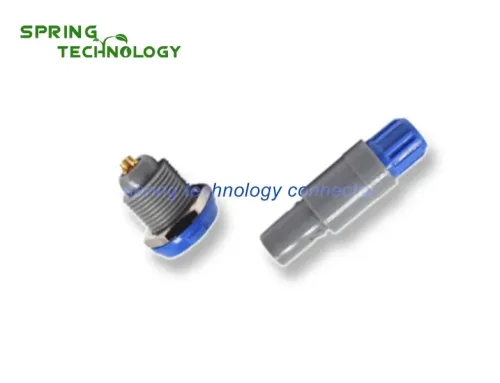Classification introduction of conventional coaxial cable
Coaxial connector cable assembly
In order to provide customers with a one-stop service, xi’an spring technology co,.ltd provide cable welding service while producing and developing circular push-pull self-locking connectors. The cable assemblies we have processed include VGA harness, XLR XLR head harness, USB harness, Dtap harness, JST harness, BNC harness, etc. Many wire harnesses use coaxial cables, such as BNC wire harnesses. Depending on the connector, customers often choose different types of cables.
First, let’s take a look at what is coaxial cable. Coaxial cable refers to a cable with two concentric conductors, and the conductor and the shield share the same axis. The most common coaxial cable consists of copper conductors insulated by insulating materials. Outside the inner insulating material is another layer of ring conductor and its insulator, and then the entire cable is covered with a sheath of polyvinyl chloride or Teflon material. . After understanding the basic definition of coaxial cable, we introduce the conventional coaxial cable classification.
Generally speaking, coaxial cables can be divided into two basic types, baseband coaxial cables and broadband coaxial cables (that is, network coaxial cables and video coaxial cables). The baseband cable is only used for digital transmission, and the data rate can reach 10Mbps. At present, the commonly used cables in baseband, the shielded wire is made of copper, and the characteristic impedance is 50Ω (such as RG-8, RG-58, etc.); the cable shielding layer commonly used for broadband coaxial cables is usually stamped with aluminum. The characteristic impedance is 75Ω (eg RG-59).
According to the diameter of the coaxial cable, it can be divided into thin coaxial cable and thick coaxial cable. The impedance of the thin cable is 50Ω, the diameter is 0.26 cm, and the maximum transmission distance is 185 meters. When in use, it is connected to 50Ω terminating resistor, T-type connector, BNC connector and network card. The wire and cable cost of the cable is relatively cheap, and there is no need to purchase equipment such as a hub, which is very suitable for establishing a small Ethernet network using relatively concentrated terminal equipment. The total length of the thin coaxial cable must not exceed 185 meters, otherwise the signal will be severely attenuated. The impedance of the thick cable is 75Ω, the diameter is 1.27 cm, and the maximum transmission distance can reach 500 meters. Because of its large diameter, it has poor elasticity, so it is not suitable for installation in narrow indoor environments. Therefore, the main purpose of the thick cable is to play the role of the network. The backbone network is used to connect multiple networks composed of thin cables. Thick cables are suitable for relatively large LANs. Long standard distance and high reliability. Since there is no need to cut the cable during the installation process, the network access location of the computer can be flexibly adjusted as needed. But the thick cable network must install transceivers and transceiver cables, installation is difficult, so the overall cost is higher. In order to maintain the correct electrical characteristics of the coaxial cable, the cable shield must be grounded. At the same time, there must be terminators at both ends to reduce signal reflection. Shenzhen Mocolink Electronics usually uses thin coaxial cables, the most commonly used models are RG58, RG59, RG174 and RG316.
Both thick and thin cables are bus topologies, that is, multiple machines are connected to one cable. This topology is suitable for machine-dense environments. However, when the contact fails, the failure will affect all machines on the entire series cable. Fault diagnosis and maintenance are very troublesome. Therefore, coaxial cables will be gradually replaced by unshielded twisted pairs or optical cables.
Xi’an spring technology Co., Ltd. is a professional push pull connector manufacturer integrating connector research and development, production and sales.
Contact me for more info and best price: [email protected], [email protected]
Visit our website: https://www.spring-connectors.com/




